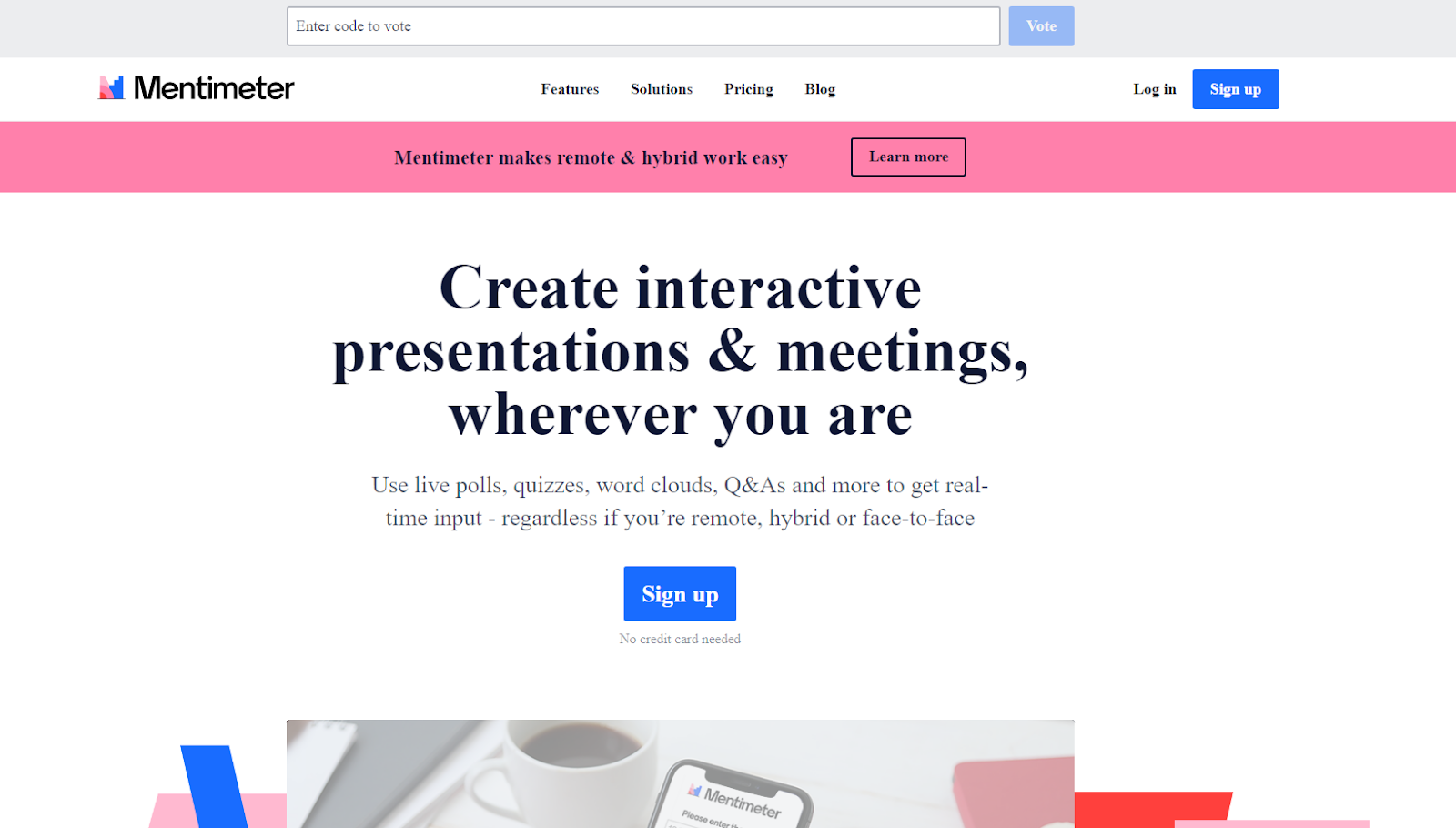
How to Use Virtual Focus Groups to Increase Online Conversions
Every marketer knows that you can't increase your sales through gut feelings alone. You must conduct consumer research and get input and customer feedback through focus groups and other research methods, including A/B testing and on-page experiments.
Lately, there has been a shift in data collection methods, from traditional focus groups to online focus groups that allow researchers to host discussions between multiple respondents online.
This method of qualitative data collection can be used to help marketers and businesses gather rich insights to then inform A/B tests they can run in their conversion rate optimization program.
1 What is an online/virtual focus group?
An online focus group gathers data through the use of group discussions, opinions, and beliefs. Focus groups place emphasis on the things people say as opposed to what they do.
It's an effective and quick research technique for collecting data in order to discover opportunities and trends in a particular segment of your business, including sales, marketing, customer service, etc. Data you collect from representatives of your user persona is very effective when you are creating or improving your brand strategy.
Regular focus groups often have between 7 and 9 participants who are invited to take part in a discussion that is guided by a moderator. Each focus group session lasts about two hours.
Focus groups are different from one-to-one interviews in that the setting allows members of the group to interact with each other and therefore influence one another during the discussion.
2 How to assemble online focus groups
There are many reasons why you may want to assemble a virtual focus group, such as:
- To dive deeper into issues that were previously identified in a quantitative study
- To test concepts, products, or marketing materials
- To develop a clearer picture of your target audience
… and so on.
Whatever the reason or purpose of your focus group, before you start assembling participants, you must first set your goals.
Since effective CRO tactics are the goal here, that’s what you must focus on. However, you must determine where you want to make optimizations as conversions can take place all over your website, including your home page, blog, landing pages, product, page, pricing page, etc.
Once you are clear on what you expect to validate or gain insights into through the research, it will become easier for you to come up with the questions that need answering and choose the ideal candidates for your online focus group.
Having said that, here are the steps to take in order to assemble the optimal research team.
Step #1: Choose the Number of Participants.
As previously mentioned, you can have a group of 7 to 9 people, but it may also be a good idea to limit the number of each group to just four of five participants so that everyone remains engaged. Limiting the group size also reduces the strain on the moderator.
Step #2: Decide the Criteria for Selection
One of the main benefits of an online focus group over a traditional one is that it allows you to recruit participants from all over the world - unless the location itself is a key variable.
Take the time to decide on the criteria for selection while considering technology ownership, technology literacy, etc. as necessary for the tools you will use in your study. You may also consider demographics, such as age, education, income, etc.
Step #3: Determine Compensation for Participation
In order to ensure full participation, you must offer compelling incentives that can be paid easily through online vouchers, bank transfers, etc. For instance, you might use PayPal for an international focus group.
When determining compensation, you also want to assess the total fixed and variable expenses of the online focus group. This includes assessing the total to be paid to participants, the amount to be paid to the moderator, and the costs of hosting the focus group as well as any other costs that may be incurred.
Step #4: Find Participants
You can’t have an online focus group if you don’t have anybody to participate, so you’ll need to figure out how to raise awareness about the group and get people signed up. One of the best ways to find participants is to use email marketing software to automate messages for every step of the process.
A good strategy is to send several automated messages to your email list to raise awareness about the group and then create more specialized messages for those who have signed up. For example, one could be sent after a person signs up to inform them of their registration, another may be sent the day before to remind them of the group, and a third could be sent after the group to thank them for participating.
Step #5: Obtain Informed Consent
Researchers should always get informed consent, such as permission to be videotaped, etc. If nicknames are required to maintain confidentiality, it's a good idea to get consent ahead of time so the person's full name stays anonymous.
Step #6: Determine Group Duration
For the most part, online focus groups are shorter than in-person focus groups. That's because people are less likely to be able to maintain concentration and engagement in an online format. Ideally, you want to choose a group duration that doesn’t last longer than an hour.
Step #7: Ascertain the Study Design
Since online focus groups are often shorter with fewer participants in each group, you may need to increase the total number of groups for your study. This will allow you to increase the sample size and the participants’ profiles in the study.
Step #8: Select the Proper Tools and Technology
Make sure your participants have access to the technology you need to conduct your study, such as uninterrupted Internet connectivity, mobile phone or computer, camera, etc. You also need to find the right communication platform or collaboration tools for online interactive focus groups (more on that below).
Step #9: Choose the Right Moderator
The moderator plays a very important role in the success of your online focus group. You must choose a moderator who has adequate product/service knowledge and the experience to keep things moving and probe deeper on important discussion points. The moderator must also be able to summarize key points on ensuring that the discussion stays on track.
3 Tools for assembling online focus groups
In order to effectively run focus groups remotely, you need to have the right tools on hand. While Google Hangouts or Zoom are decent choices, their functionality is highly limited. Some of the best webinar services not only allow you to host virtual meetings but also host a variety of tools for managing the groups.
A comprehensive community management tool with the right features will allow you to run high-frequency studies, manage longitudinal tracking, and much more.
You'll also be able to get easy access to qualitative and quantitative data so you can make faster, more informed decisions for your business.
Here are some of the tools you might consider for your study:
1. Video Conferencing Tools
Depending on your type of study, you need to choose tools that will allow you to have clear face-to-face interaction with your study participants. Ideally, you also want tools that allow video recording and streaming.
Examples of video conferencing tools include:
- Zoom
- Go to Meeting
- Microsoft Teams
- WebEx
- Adobe Connect
- Google Hangouts
2. Collaboration Tools
There are a ton of different collaboration tools to support online focus groups. These are not meant to be alternatives to video conferencing tools, but rather they can be used to do brief exercises with the respondents during the session.
Examples of collaboration tools include:
- Whimsical
- Mural
- Miro
Conversely, if you want to create video content to brief your respondents about the study, you may as well need a video marketing tool. With these tools, you can make content such as explainers or tutorials to introduce your study.
3. Survey Tools
In addition to collaboration tools, you can also ask each of the individual participants to respond to a few questions by completing a quick online customer feedback survey. They can then share the results in real-time with the group, giving you more input for discussion.
Examples of survey tools include:
- Surveymonkey
- Google Forms
If you have the email addresses of the members of your focused group (which you might have collected during onboarding or any other way), you can use them to resend the survey by email. You can even use those collected emails to send reminder emails.
To increase your email open rates, make sure you follow all the essential prerequisites like having a catchy email subject line, optimized subject line length for mobile users, being clear and conversational, etc.
But don’t just stick to benchmarks; run a/b tests and see for yourself what works best for your business.
You can also use online polling tools like Mentimeter and Pollev to maintain engagement at key points during the session.

4 How to collect, organize, and analyze the data
You now know the steps to take in order to assemble a strong online focus group. You also know the types of tools required to successfully run your focus group remotely.
Now, it's time to understand how to collect, organize, and analyze the data from your focus group so you can use it to create effective CRO tactics.
Gathering Data from Online Focus Groups
The trick to running a successful online focus group is to ask the right questions, the answers to which will fuel your CRO strategy. Here are some tips for gathering insightful data:
Develop a Strong Research Plan
In order to gather data effectively, you must first develop a strong research plan. You need to come up with a compelling mix of discussion topics, questions, and exercises that will keep your participants engaged.
And, make sure you have a great moderator who will stick to the script while also teasing out new reactions and discussion topics from the group based on which direction the conversation takes.
Engage and Encourage Your Focus Group
To ensure you get high-quality data from your group, your moderator must be able to engage, encourage, and elicit information from them.
The moderator must respond quickly to chats, impromptu questions, technical issues, etc. in order to keep the discussion flowing.
They must also be able to sense engagement, body language, etc. in order to keep the group on track and capture the best possible quality of information.
Capture the Data Accurately and Immediately
It's essential to record your online focus group. Make sure you transcribe the sessions for future analysis and reference.
The transcripts will also help you maintain organization and save you time by making your findings a lot more accessible.
You’ll also be able to use the transcripts to review and summarize your study results so you can incorporate the feedback into optimizing your conversion rates and growing your business.
When you record and transcribe the groups properly, you will not only be able to share the discussion with others who were not in attendance, but you also have an easy way for you to review various discussion points and look for keywords, patterns, direct quotes, etc. that will be helpful in creating effective CRO tactics.
Organizing Data from Online Focus Groups
Collecting that data from your online focus groups will mostly be the same as in-person groups. If you use an online collaboration platform, gathering input during the sessions will be easy and automatic.
You’ll also have an easier time managing your online qualitative and quantitative research thanks to powerful modules, such as a discussion platform, idea board, panel management, incentives management, and various other features.
Analyzing Data from Online Focus Groups
Your next step is to determine the best way to analyze the data to create usable intelligence for the development of effective CRO tactics.
Remote focus groups are qualitative, which means it's crucial to have effective means of collecting and analyzing your data.
Through proper analysis, you will be able to draw important insights, sentiments, and trends from your study that will help you create effective CRO strategies to meet your objectives and goals.
During your analysis, just make sure to look at the big picture. A lot of marketers who conduct online focus groups are looking for quick and easy ways to get instant growth. But it's never that simple.
You must dig deep into your data to find insights that will really make a difference in your strategy.
Once you've analyzed the result of your study, you can then report and present the results of which may lead to a wide range of CRO marketing strategies for you to try, such as:
Creating text-based CTAs in your blog posts
Adding lead flows on your blog
Running tests on your landing pages
Helping leads to immediately become marketing-qualified leads
Building automated workflows for enabling your team
Adding messages to high-converting pages
Optimizing high-performing blog posts
Leveraging retargeting for audience re-engagement
… and much more.
Conclusion
I hope this article has helped you understand how you can use online focus groups to create effective CRO tactics to help you meet your business objectives.
Use it as a resource to help you assemble strong online focus groups that you can use (in combination with your quantitative research) as a way to get deeper and more meaningful insights into your target audience and how you can develop and refine your products or services.




